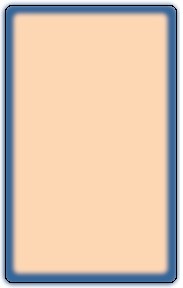by Alan McAllister, CCHt PhD-phys
In part 1 we introduced the concept of the human energy body: the primary existence of a human being as an energetic being, having the capacity to vibrate and to hold frequencies of all varieties. We also started a discussion of how we create vibrations (or pictures) in our mind, i.e. in part of our energy body, and how these vibrations and patterns may become stuck. A very general way to view the healing process is that it has to do with releasing the stuck pictures or energy, allowing our being to relax back to its original state.
Not all of the energy or pictures in our space are our own creation. Some of them have come from other people or society. We learn lessons about how to survive, how to behave, what not to do or be. Some things we take in an effort to heal others, especially loved ones (our Mother’s sense of powerlessness, our Father’s anger, a friend’s pain), some we are forcefully given. The variety is as endless as the human capacity to create.
These pictures we acquire from others may have been in our space so long we come to think of them as part of us. While all energies or pictures, foreign as well as our own, may be useful or harmful, they are limiting, and we need to be able to let them go in order to return to our original relaxed state. They are stuck because of judgments about good and bad, pleasure and pain.
Judgment is what gives rise to the two sides of the coin of attachment: attraction and resistance. Judgments about the experience necessary to release an energy or picture, do we have to give up something we like, or undergo something we don’t like. Judgments about others, they were wrong to do something to me, so I can’t forgive them, can’t let go. Judgments against oneself, I’m not OK unless I take on other people’s pain to heal them.
This is not to say that we are all wrong to have judged others or ourselves. The capacity to judge has been an essential survival tool, will this thing/animal/person help me or hurt me?, i.e. is it good for me or not? But like many things that have been useful, judgment, as opposed to observation and discernment, can outlive its usefulness. In energetic terms it is judgment that maintains the vibration or picture, either in actual or potential form in our space, what prolongs the action or delays the reaction. This is the source or “karma” or samskaras, which need to be released for us to return to our pure state.
For example, as a healer it is good to be able to discern when a condition, either physical or energetic, might not in the client’s best interest, at least in the long term. It may be clear that muscles are tense, or energy is stuck. However, if one approaches the matter from a place of judgment: “There is something wrong here and I have to fix it”, the healing process is impaired. The client, or perhaps their physical or emotional body, senses the judgment and will react to it as an attack: “I am being judged, I am bad or wrong, etc.” and often this produces resistance. In cases where the condition is the result of internalized judgments to begin with, the practitioner’s judgement reinforces the resistance that is holding the condition in place.
The effectiveness of compassion in healing work, is simply being able to approach the client’s condition without being in judgment of it. This assists the client to release their own judgments. Now instead of having a problem that needs fixing, they have certain energy in their space, which they might choose to release. This is no longer as threatening a position, it is not about good or bad, it is simply about what is and what might be.
This is called neutrality. The condition or situation can be there or not be there and we are OK with it. Of course this is much easier with some things than others, and is not a recommendation to put up with all situations just because they are there. But being able to find neutrality, or in Buddhist terms, detachment, is a very freeing place, and one that allows release and healing to take place.
In clairvoyant work there are a suite of tools and techniques that assist the practitioner to work from a space of neutrality. Often from that space merely saying hello to an energy will result in its being released. One can see the same principle in the emphasis on being relaxed in applying Zen Shiatsu or in the T’ai Chi practice of push hands so as to avoid triggering resistance.
So while judgment holds things in our space, neutrality allows us to release them.
(© 8/01)

